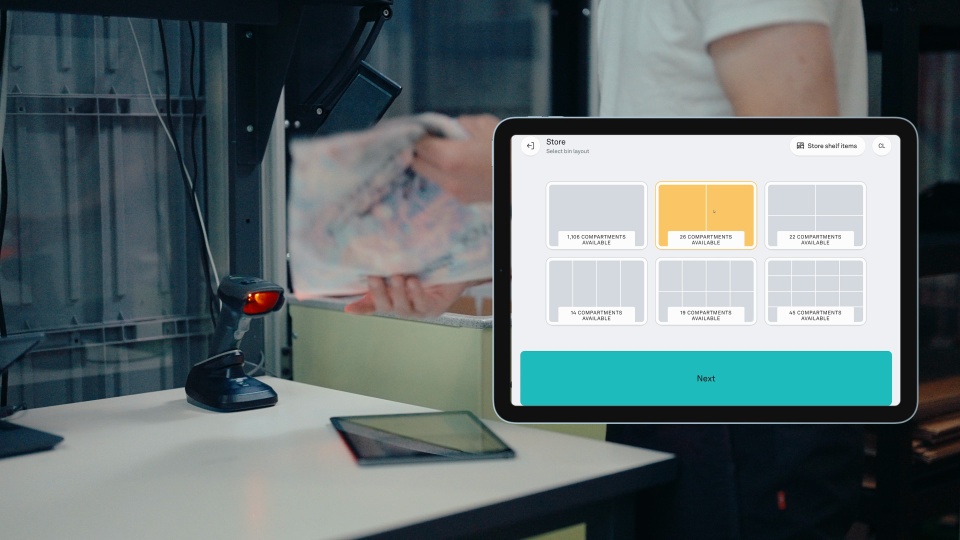Picture this: it’s Monday morning, yesterday’s campaign went better than expected, and now orders are stacked higher than your coffee cups. The team’s moving fast, dashboards are flashing, and somehow the tools that once kept everything under control now feel like they’re in the way.
So you add another integration, another license, another promise of visibility, and yet fulfillment still feels messy, slow, and too manual for how quickly your business is moving. That’s the moment when most teams start asking the real question: do we actually need a WMS, or do we just need more control?
What is a Warehouse Management System (WMS)?
Before we go any further, let’s make sure we’re on the same page.
A Warehouse Management System, or WMS, is software that helps you track and organize what happens inside your warehouse. It knows where your products are, what’s in stock, what’s been picked, and what’s ready to ship. In theory, it smooths everything out from receiving to packing to dispatch.
But in practice, once things get busy, a WMS can start adding friction instead of removing it. It’s great at recording what’s happening, but it’s not the one actually making it happen.
Fulfillment isn’t broken, it’s just changed
Fulfillment used to be simple: receive, pick, pack, ship. But ecommerce doesn’t move in straight lines anymore.
Today’s challenges look more like this:
- Customers expect next-day or even same-day delivery
- Inventory moves between multiple channels and marketplaces
- Sales spikes hit overnight during campaigns or seasonal peaks
Traditional WMS software was built to log the motion, not create it. It’s great at organizing data, but it still relies on people to move the goods.
If your business is stable and you’re not trying to scale fast, a WMS will keep things tidy enough. But if your brand is growing, if “organized” doesn’t feel like “in control,” and if every new app feels like another layer to manage, maybe it’s time to look beyond software alone.
When your WMS starts slowing you down
A WMS works fine when operations are simple and ambitions are steady. But when things start to grow, when campaigns kick off, orders spike, and your team’s stretched thin, cracks start to show. You add systems to fix systems, and soon the fix becomes the problem. Syncs fall behind, data gets delayed, and manual workarounds start piling up.
What began as control turns into complexity. That’s when automation steps in and changes everything.
Modern warehouse automation systems like Pio don’t just track what’s happening, they make it happen. Compact cube storage lets you hold up to ten times more inventory in the same space, while robots pick and move goods up to five times faster than manual operations. Because Pio connects directly to your ecommerce or ERP platform, everything runs as one. No lag, no syncing, no chasing updates.
Think of it like a juice press. You load orders, inventory, and data on one side, and what comes out the other is fulfillment that’s smooth, fast, and ready to ship. That’s what happens when automation and information work together in real time.
WMS alternatives
If you’re looking for alternatives to a traditional Warehouse Management System, you’re not alone. Many growing ecommerce brands are realizing that software alone can’t keep up with the speed and complexity of modern fulfillment.
That’s where warehouse automation systems like Pio come in. Instead of just tracking what’s happening, Pio actually makes it happen by combining the core features of a WMS with real-time robotic execution, built-in inventory control, and seamless integrations with ecommerce platforms and ERPs.
So the big question becomes: does Pio replace a WMS, or can it work alongside one?
Usually, Pio replaces it. But if your setup calls for both, they can absolutely work hand in hand.
Pio replaces a WMS when:
- You run one or a few sites and want a single system for visibility and execution
- You’re tired of switching between multiple software tools to track what’s already happening
- You want something plug and play that scales without the complexity or cost of traditional systems
Pio pairs with a WMS when:
- You operate multiple warehouses or 3PL sites and need cross site coordination
- You rely on a WMS for billing, client workflows, or enterprise level reporting
- You want Pio’s robots to handle execution while your WMS stays the central command
Either way, data flows both ways. Orders drop straight into Pio, and updates flow right back in real time. It’s not about replacing what you’ve built, it’s about making every piece work smarter together.
Pio gives you the control of a WMS, the speed of automation, and the simplicity of a system designed for growing ecommerce and 3PL teams. It’s not software that sits on top of your process, it becomes the process.
How Pio’s warehouse automation system fits your tech stack
Pio was built to simplify your tech stack, not add to it. It connects directly to Shopify or other popular ecommerce platforms in minutes, syncing orders and inventory automatically. It also integrates with ShipStation and Webshipper so shipping labels print the moment an order is packed.
For teams that want deeper forecasting or purchasing insights, there’s a plug in for Inventory Planner too.
And if you already use a WMS or ERP, no problem. Pio’s open API connects everything seamlessly. The goal isn’t to rip and replace, it’s to keep your stack lean, flexible, and ready for whatever’s next.
Did you know? Many ecommerce customers and smaller 3PLs have simplified their operations by combining Shopify with Pio, no separate WMS needed. The two-click Shopify integration makes it simple to connect and start automating right away.
What changes day to day with automation
Once you see it in action, the biggest change isn’t just what happens, it’s how it feels. Teams stay at their workstations while robots bring the goods. Every pick happens fast, every order stays visible, and every move just makes sense.
Instead of running between aisles or juggling systems, teams can finally focus on what matters most: packing, quality, and getting orders out on time. Restocking still happens, but now it’s guided by real-time data so your team knows exactly when and where to act.
Throughput climbs. Errors drop. Even in the middle of peak season, the warehouse feels calm and under control.
Because the story of automation is still a story about people. The ones building brands, packing orders, and keeping promises. Pio was designed for them. For small teams doing big things, for warehouses that want to move faster without adding chaos, and for anyone who believes control should feel simple.
In every Pio warehouse, the headline isn’t the robots. It’s the people behind them.

Frequently asked questions about WMS and warehouse automation
- Is Pio a WMS?
In most cases, yes. Pio includes built-in WMS functionality for inventory visibility, order tracking, and fulfillment control. You can also integrate it with an existing WMS if you run multiple sites or 3PL operations. - Can I use Pio with my existing WMS?
Yes. Many 3PLs and multi-site operations connect Pio to their WMS for cross-site coordination, while Pio runs local automation. Data stays synced in real time across both systems. - Is Pio an affordable WMS alternative?
Yes. Pio runs on a predictable monthly Robots-as-a-Service (RaaS) model, built on AutoStore technology, that includes automation, cube storage, and software, making it an all-in-one, affordable alternative to traditional WMS setups. - What type of warehouse does Pio fit?
Pio is built for small to mid-sized ecommerce brands, retailers, B2B operations, and 3PLs that want faster fulfillment, better space utilization, and more control. You can start small with the P100 system and scale up as your business grows. - Does Pio integrate with ecommerce platforms?
Yes. Pio connects directly to Shopify and other popular ecommerce platforms, and integrates easily with tools like ShipStation, Webshipper, and Inventory Planner, plus other systems through open API.
From managing to mastering
Fulfillment isn’t just about getting orders out the door. It’s about control, clarity, and confidence. WMS systems helped create order, but modern ecommerce needs movement.
Automation takes you from managing information to mastering operations. It gives your team time back, connects every step, and scales right alongside your growth.
So before you add another license or integration, ask yourself: do you really need a WMS, or do you just need a smarter way to run your warehouse?
.jpg?width=2600&name=Beauty-Welness-Pio-04743%20(1).jpg)


-1.jpg?width=1920&name=Sports-Pio-05131%20(1)-1.jpg)


.jpg?width=600&name=Beauty-Welness-Pio-04743%20(1).jpg)